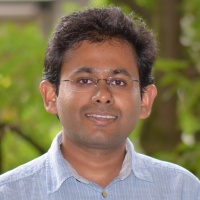Blog
Computational science applied to medicine and biology – Varied perspectives
As a computational scientist, I use and develop numerical models, implement them as computer programs and execute them on supercomputers to simulate physiological flows, with the intention of answering mysterious clinical questions. The interdisciplinary nature of this research leads to varied perspectives by scientific people from different communities. I note some of my (funny and informative) experiences here, mostly gained from conversations during conferences.*
High Performance Computing (HPC) being one of my primary skills, I was once asked by a clinician why I don’t use a million processor cores to simulate flow in the complete human cardiovascular system rather than just two arteries harboring an intracranial aneurysm? While it is a valid point of view, I wondered whether I should tell him details about algorithms, Amdahl’s law, boundary conditions winscp ssh , memory limitations etc, but then I thought hell NO, let’s just enjoy the wine served at the conference! I am sure that the clinician had similar thoughts, namely that there was no use of explaining things like cellular biology etc to me, so why not just focus on the wine.
Things become critical sometimes when there are varied perspectives among the people of the same discipline. Coming back to HPC, an engineer once presented his software that could simulate cardiovascular flows on “Super” computers. He even showed a linear scaling plot on 32 cores! I asked the him later if his code could scale up to 96,000 cores like mine, and he said sure, why not? You see that it is linear up to 32 and I don’t see why it wouldn’t go up to 96,000!! My fun part was however over when the same person asked me if my code could simulate fluid structure interaction and dynamics of red blood cells at that scale. (But I’m sure that he was now having fun looking at my face).
Funnily however, human mind is somehow programmed in a way that physical laboratory experiments appear highly accurate and relevant to scientists of almost all disciplines compared to numerical simulations. Along similar lines, an experimentalist once told me that he does not see minute vortices in turbulent flows as I do in my dear simulations executed on my beloved national supercomputer. I asked him if his experiments are reproducible and he asked me if I could simulate the effect of environmental pollution in a pipe flow! Things got quite upsetting after that and its in best interest of the reader to not think what might have happened.
While these events and such conversations are stressful sometimes, and funny in retrospect, a deeper view and analysis of such events illuminates that this is what science is about – to fill knowledge gaps from various disciplines and work towards the common goal of answering physiological and physical questions – using combined, interdisciplinary efforts. It is the conflict of ideas that leads a discipline to develop, and allows research to progress for the benefit of humankind. Without these conversations, reflective of skepticism towards each other, there wouldn’t be much scientific progress.
*The views and experiences presented herein are my personal, and are essentially meant for humor
